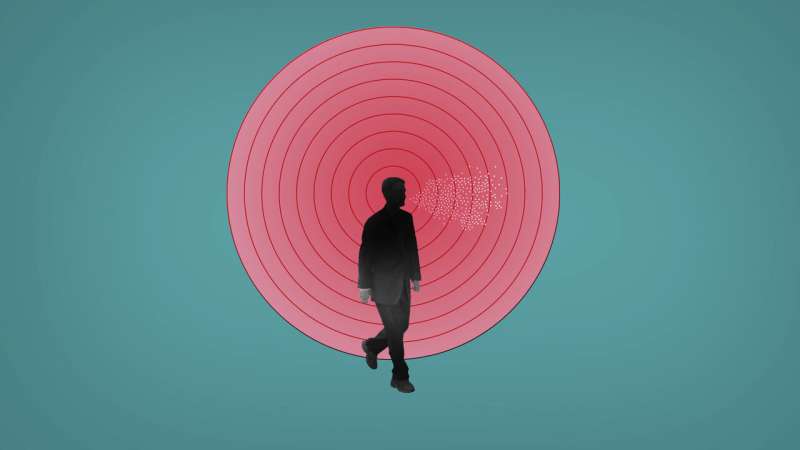AP Illustration/Peter Hamlin
Research indicates it can, but it's not clear how much of the pandemic is caused by such cases.
People spray liquid droplets of various sizes when they cough, sneeze, talk, sing, shout and even just breathe. The coronavirus can hitchhike on these particles.
The advice about staying at least 6 feet apart is based on the idea that the larger particles drop to the ground before getting very far.
But some scientists have also focused on tinier particles called aerosols. These can linger in the air for minutes to hours, and spread through a room and build up in concentration if ventilation is poor, posing a potential risk of infection if inhaled.
For aerosols, "6 feet is not a magic distance" and keeping even farther apart is better, says Linsey Marr, who researches airborne transmission of infectious diseases at Virginia Tech.
Some scientists say there's enough evidence about aerosols and the virus to take protective measures. In addition to the usual advice, they stress the need for ventilation and air-purifying systems when indoors. Even better, they say, is to stay outdoors when interacting with others.
© 2020 The Associated Press. All rights reserved. This material may not be published, broadcast, rewritten or redistributed without permission.
























